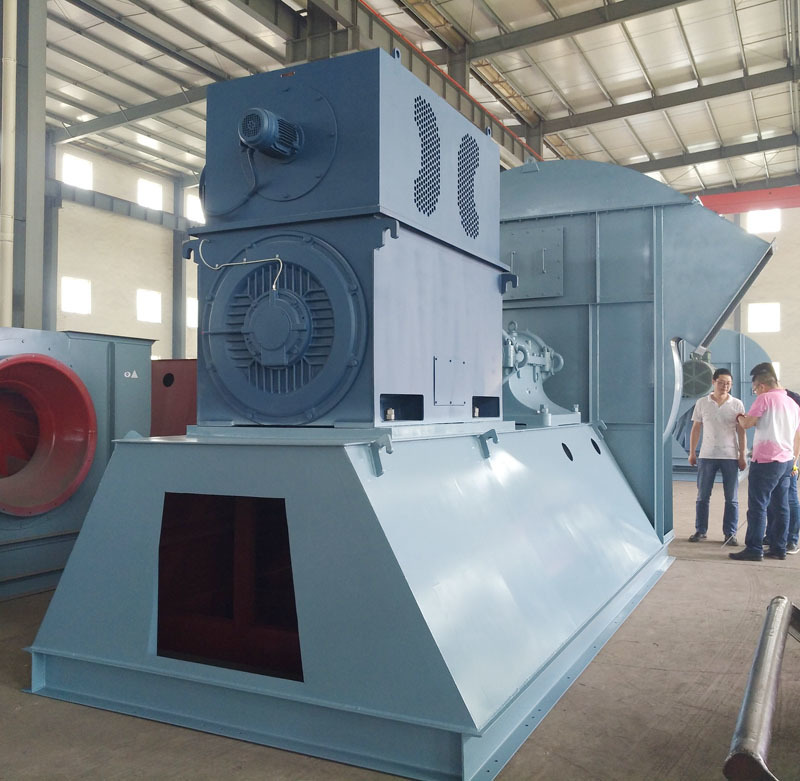A brief introduction to several common types of incinerators
Release time:
2022-04-20
The application and development of waste incineration technology abroad has a history of several decades, with relatively mature furnace types including mechanical grate incinerators, fluidized bed incinerators, pulse combustion grate incinerators, and rotary incinerators.
The application and development of waste incineration technology abroad has a history of several decades, with relatively mature furnace types including mechanical grate, fluidized bed incinerator, pulse throw grate incinerator, and rotary incinerator. Here is a brief introduction to these furnace types.IncineratorMechanical grate.

Working principle: Waste enters the inclined grate through the feed hopper. Due to the interleaved movement between the grates, the waste is pushed downward, allowing it to pass through various areas on the grate until it is completely burned and discharged from the furnace. Combustion air mixes with the waste and enters from the lower part of the grate; high-temperature flue gas passes through the boiler heating surface to generate steam, while the flue gas is cooled and treated by flue gas treatment devices before being discharged. Characteristics: The contact surfaces between the grates must be quite smooth, and the material and processing precision of the grates are required to be high, with a very small gap between them. Additionally, the mechanical failure rate is high, the structure is complex, and maintenance is extensive, making the high cost and maintenance of the grates difficult for promotion and application in China.IncineratorFluidized bed incinerator. Working principle: The furnace body consists of a porous distribution plate. A large amount of quartz sand is added to the furnace, which is heated to above 600°C. Hot air above 200°C is blown into the bottom of the furnace, causing the hot sand to boil, and then the waste is thrown in. The waste boils together with the hot sand, quickly drying and igniting. The unburned waste has a lighter specific gravity and continues to boil. The burned waste has a heavier specific gravity and falls to the bottom of the furnace. After cooling with water, coarse and fine ash are sent outside the plant by sorting equipment, while a small amount of medium ash and quartz sand are returned to the furnace for continued use by lifting equipment. Characteristics: Fluidized bed combustion is thorough, and combustion control within the furnace is relatively good. However, the flue gas has a high dust content, operations are complex, and operating costs are high, with high requirements for fuel particle size uniformity, necessitating high-power crushing equipment. Quartz sand causes severe wear on the equipment, leading to high maintenance requirements.
Rotary incinerator. Working principle: Cooling water pipes or refractory materials are arranged along the furnace body, which is placed horizontally and slightly inclined. The continuous rotation of the furnace body allows the waste inside to burn thoroughly while moving in the direction of the furnace's inclination until it is completely burned and discharged from the furnace. Characteristics: High equipment utilization, low carbon content in ash, low excess air coefficient, and low harmful gas emissions, but combustion is difficult to control, and it is challenging to burn when the waste has low calorific value.
Pulse throw grate incinerator. Working principle: Waste is fed into the drying bed of the incinerator by an automatic feeding device for drying, and then sent to the first level grate for high-temperature volatilization and cracking. The grate is driven by a pulse air power device, and the waste is thrown step by step into the next level grate. At this point, high molecular substances are cracked, and other substances burn. This process continues until complete combustion, entering the ash pit, where it is discharged by an automatic slag discharge device. Combustion air is injected from the air holes on the grate, mixing and burning with the waste, which is suspended in the air. The volatilized and cracked substances enter the second combustion chamber for further cracking and burning, while unburned flue gas enters the third combustion chamber for complete combustion; high-temperature flue gas heats steam through the boiler heating surface, and the flue gas is discharged after cooling.Incinerator沿炉体布置冷却水管或耐火材料,炉体水平放置,略倾斜。通过炉体的不断运转,使炉体内的垃圾充分燃烧,同时向炉体倾斜的方向运动,直至完全燃尽,排出炉体。特点:设备利用率高、灰中碳含量低、过量空气系数低、有害气体排放少,但燃烧不好控制,垃圾热值低时很难燃烧。
脉冲抛式炉排焚烧炉。工作原理:垃圾由自动给料装置送入焚烧炉的干燥床进行干燥,然后送入第1级炉排,在炉排上进行高温挥发和裂解。炉排由脉冲空气动力装置驱动,垃圾逐级抛入下一级炉排。此时高分子物质裂解,其他物质燃烧。以此类推,直到燃尽,进入灰坑,由自动排渣装置排出。助燃空气从炉排上的气孔注入,与垃圾混合燃烧,而垃圾悬浮在空气中。挥发裂解后的物质进入第2燃烧室进一步裂解燃烧,未燃烧的烟气进入第3燃烧室完全燃烧;高温烟气通过锅炉受热面加热蒸汽,烟气冷却后排出。
Related News






